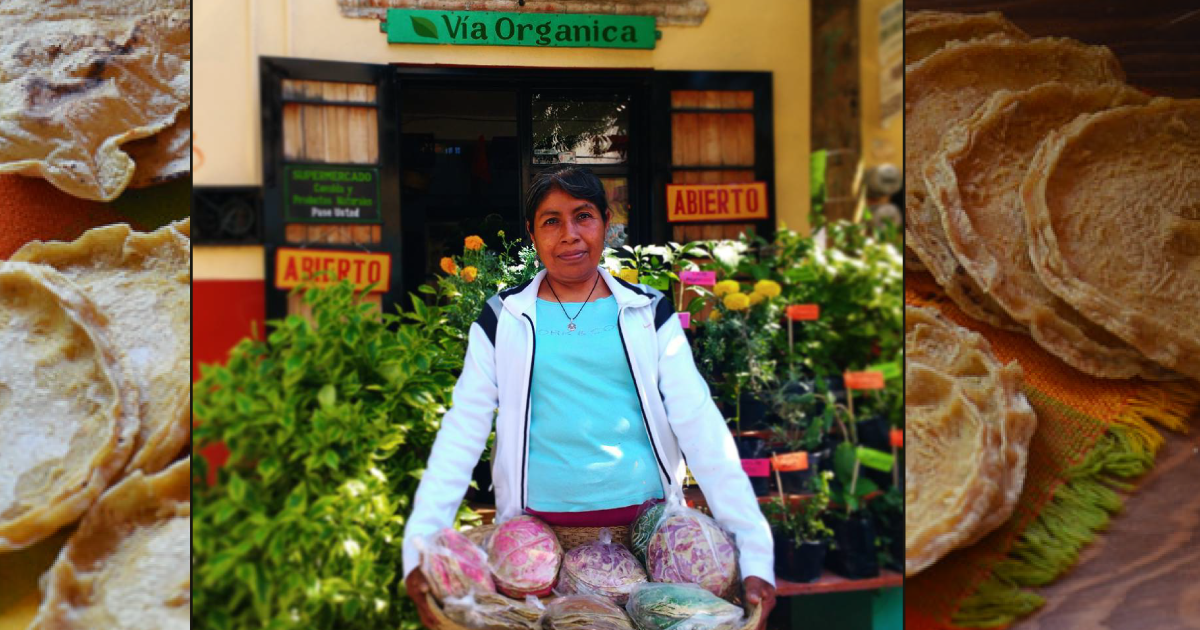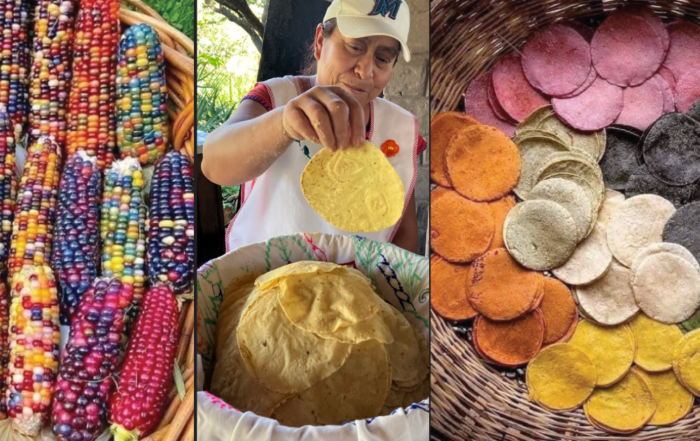Mexico Includes GMO Labeling Requirements in Ambitious New Food Sovereignty Law
May 8, 2024 | by Alexis Baden-Mayer
Organic Consumers Association
Mexico is taking action! It has a new law guaranteeing the right to adequate and sustainable food! The new General Law of Adequate and Sustainable Food (LGAAS by its Spanish acronym) took effect on April 18, 2024 and implementing regulations will be established within 180 days. This new law follows Mexico’s 2023 Corn Decree to gradually eliminate genetically engineered corn used for human consumption and animal feed.
Article 1 lays out the purpose of the law, which includes (this is a shortened excerpt of the text):
- To promote, protect, respect, and guarantee the right to adequate food and the human rights with which it has interdependence;
- To prioritize the right to health, the right to the environment, the right to water and the best interests of children, in policies related to adequate food by the Mexican State;
- To encourage the production, supply, fair and equitable distribution and consumption of nutritious, sufficient, quality, harmless and culturally adequate food, while avoiding food waste;
- To strengthen the country’s self-sufficiency, sovereignty and food security; and
- To promote the informed consumption of healthy and nutritious food.
Article 4 defines the right to food as (this is the full text):
- The ability to meet food needs, such as the combination of nutritional products for physical and mental growth, development and maintenance, and physical activity that is sufficient to meet human physiological needs at all stages of the life cycle, according to sex and occupation;
- The availability of food, which is the possibility of every person to feed themselves properly, either directly through the work of the land, by the sustainable management of biodiversity, water and knowledge, or through efficient and affordable supply systems;
III. Physical access to food, which is the possibility that any person can have materially within reach the food or the means to obtain it, especially the sectors of the population that are in a vulnerable situation;
- Economic access to food, which consists of the income of individuals or their families and the cost of food or the means to obtain it, have an adequate balance, so that they can acquire it, or their necessary means of production in the supply systems, without putting at risk the satisfaction of other basic needs;
- The acceptability and cultural relevance of food, which consists of considering the values not related to nutrition that are associated with food and food consumption, as well as the well-founded concerns of consumers about the nature of the food available;
- Sustainability, consisting of food production having a reduced environmental impact, with respect to biodiversity and ecosystems, in order to enable access to food for present and future generations;
VII. The free distribution of the inputs necessary to produce adequate food, as well as the free distribution of seeds of the country’s agrobiodiversity;
VIII. Biocultural wealth, emphasizing gastronomic diversity and agrobiodiversity, as well as the link between food and culture, and
- Access, disposal and sanitation of water for personal and domestic consumption in a sufficient, healthy, acceptable and affordable way, in the terms of the sixth paragraph of article 4 of the Political Constitution of the United Mexican States, and its regulatory legislation.
Article 5 obligates Mexican authorities “to promote, respect and protect the exercise of the right to adequate food, in accordance with the principles of universality, interdependence, indivisibility, progressiveness, subsidiarity, environmental sustainability, precaution, social participation, gender and age equality, best interests of children, cultural diversity, efficiency, free competition, transparency and accountability. This includes the adoption of measures that prevent individuals from depriving people of access to adequate food.”
In the Second Title, Chapter 1 promotes “exclusive breastfeeding during the first six months of life.”
Chapter 2 guarantees the right of children and adolescents to receive adequate food at school, free of charge or at affordable prices. This chapter bans foods that “exceed the maximum limits of calories, added sugars, saturated fats, sodium … both inside and in the vicinity of basic education schools.” It also establishes nutrition education to include (full text):
- The meaning of proper food;
- The cultural, ecological, economic and social relevance of the regular consumption of local food;
III. The promotion of local food consumption and production, through the promotion of community orchards;
- The way of reading and interpreting the labels and nutritional information of the products;
- The types of food and beverages, their contents and the quantities that can affect health, as well as the practical consequences of that damage on the individual and the community;
- Nutritional guidance for the preparation of nutritious, sufficient, sustainable and quality diets according to the context and requirements of the person;
VII. The promotion of the consumption of natural products, and
VIII. The importance of education and physical activation for the achievement of a healthy life.
Chapter 3 requires food to be “truthful, clear and understandable about their origin, calories, added sugars, saturated fats, sodium and critical nutrients.” This chapter also requires producers and distributors of processed foods to “warn … when their products contain ingredients that directly come from the use of genetically modified organisms.” And it gives consumers the right to request and receive information from Food producers and distributors “regarding the inputs or processes they use to generate their products.”
Chapter 4 creates “regulatory baskets” for the delivery of food assistance and specifies that they will include “whole cereals (preferably corn and its derivatives), legumes (primarily beans), fruits, vegetables, animal products and other foods that are produced locally or regionally, according to the time of year and derivatives of sustainable production, as well as those that, by culture and traditions, are part of the diets in a specific region.”
Chapter 5 creates “community canteens” for the delivery of food assistance that prioritize “the acquisition of nutritious food from small and medium-scale local or regional producers, including farmers in family or backyard gardens.” This chapter requires that all “establishments that provide food or beverage services” (full text):
- Guarantee a minimum standard of food safety;
- Offer non-bottled natural water, suitable for human consumption, at no cost to consumers;
III. Place in a visible place, and in the menus messages that promote healthy eating;
- Limit the reuse of oils or other fats in frying, in accordance with the regulatory provision;
- Limit the availability of salt, except at the request of users, and
- Offer healthy, nutritious and appropriate food options and preparations on your menu.
In the Third Title, Chapter 1 includes (summarized excerpt):
- The storage of basic grains and seeds that serve as a strategic reserve for the food security of the population in conditions of food, health or humanitarian emergency;
- The reduction of food loss and waste, through the promotion of short marketing chains, direct sales by producers, and the organization of buyers’ clubs to facilitate consumers to make direct purchases as a group.
- The criminalization of anti-competitive behavior against new producers or distributors when it interferes with the right of the population to adequate food.
- A ban on the use of substances harmful to health and the environment, in the production, transport, storage or packaging of food of any kind. “The special legislation on health and environmental protection will establish the list of harmful substances based on the current regulatory and legal framework established by the competent authorities and the corresponding sanctions, taking into account the principles of precaution, prevention and sustainability.”
Chapter 2 calls for “special policies in favor of small and medium producers” and requires at least 15% of government purchases of food and primary inputs to be purchased directly from small and medium-scale producers, in the agricultural, livestock, forestry, aquaculture and fisheries sectors, as long as they “meet the conditions and requirements for the supply of adequate food, and within the budgetary limits for government purchases that each agency or entity has.”
Chapter 3 creates “a storage program of strategic reserves of basic grains and seeds, which allow to overcome shortages and give continuity to productive activity.”
In the Fourth Title, Chapter 1 lays out principles of food production (summarized excerpt):
- All people have the right to have the appropriate conditions for food production.
- Food production must seek self-sufficiency in each locality and region of the country.
- The family or community production of food for self-consumption will be considered a priority.
- The maintenance of the ecological balance, as well as the conservation and regeneration of natural resources, will be, in all cases, a fundamental factor for decision-making in terms of production methods and to ensure the sustainable use of these resources.
- Organic waste is recognized as essential elements for soil regeneration and will be managed for the benefit of sustainable food production.
Chapter 2 lays out additional principles, including ((summarized excerpt):
- Self-sufficiency and food sovereignty;
- The preservation of the health of all people involved in food chains from production to consumption;
- Environmental sustainability and the care of the biodiversity and agrobiodiversity of the different regions of the country;
- The effective participation and incorporation, as well as respect for the rights of farmers and others who work in the countryside, indigenous and Afro-Mexican peoples, rural and fishing communities in national development, considering especially the inclusion and participation of women and young people under decent work conditions;
- The development of the productive capacities of the rural and urban population that, due to their conditions of vulnerability, need it most;
- The production of equitable conditions for access to markets, especially for the promotion of small and medium-scale production, including family farming, and
- The preservation of the use of traditional techniques and ancestral knowledge for food production.
- The production of food in schools.
- Support for the recovery of native seeds and plants.
- Local food storage so that the risk of loss is diversified and for the ease of food distribution in the case of an emergency.
- An adequate and sustainable infrastructure for the capture, storage and conduction of water useful for the production of food.
The new law establishes a National Interagency System of Health, Food, Environment, and
Competitiveness with a mandate to define national food policy under the new framework.
Related Posts
Together We Are Making Waves
May 16, 2024 | by Rose Welch, National Director Organic Consumers Association Spring greetings from all of us at the Organic
Make Your State the First to Ban Monsanto’s Roundup Weedkiller!
Our Millions Against Monsanto campaign to ban glyphosate is gaining steam in statehouses across the country.
Which U.S. state will be the first to ban glyphosate-based weedkillers like Roundup, the flagship pesticide manufactured by Monsanto (now owned by Bayer)?
Will it be yours?
Take Action: Make your state the first to ban Monsanto’s Roundup weedkiller!
Organic Bytes Newsletter #850: Mexico’s Right to Refuse GMOs
BILLIONS AGAINST BAYER Using a Trade Agreement to Bully Mexico Into Importing Monsanto-Bayer’s GMO Corn By Alexis Baden-Mayer, Political Director, OCA: Mexico has been making bold




